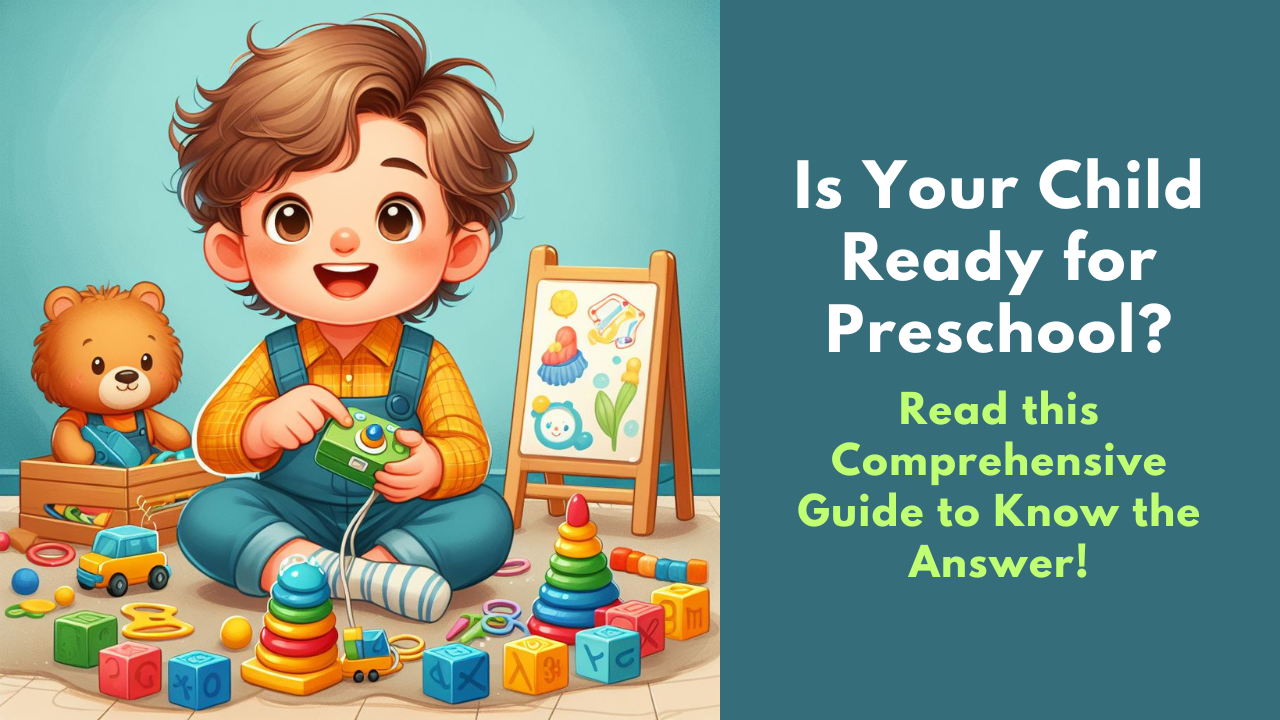Discover essential signs and developmental milestones to assess if your child is ready for preschool. Explore social, emotional, and cognitive aspects, practical tips for parents, and communication strategies with preschools in this comprehensive guide.

Introduction
Signs of Preschool Readiness
Preparing for preschool involves observing certain signs that indicate your child’s readiness to embark on this educational journey. Here are key indicators across various developmental domains:
Social and Emotional Readiness
Children displaying social and emotional readiness often exhibit:
- Ability to Play and Interact: Engaging in cooperative play, sharing toys, and interacting positively with peers.
- Emotional Expression: Demonstrating basic emotional understanding, managing emotions, and expressing feelings verbally.

Independence and Self-Care Skills
Readiness in self-care encompasses:
- Basic Self-Help Skills: Attempting to dress independently, managing personal belongings, and using the restroom without assistance.
- Following Simple Instructions: Understanding and following basic instructions and routines.
Curiosity and Interest in Learning
Children showing an inclination towards learning often display:
- Curiosity and Exploration: Showing interest in books, puzzles, art activities, and a desire to explore new things.
- Eagerness to Learn: Asking questions, displaying curiosity about the world, and demonstrating an interest in letters, numbers, or shapes.
Assessing these signs provides valuable insights into your child’s preparedness for the social, emotional, and cognitive aspects of the preschool environment.

Developmental Milestones
Speech and Language Development
- Vocabulary and Communication: Evaluate your child’s vocabulary size, ability to communicate needs, and understanding of simple instructions.
- Language Skills: Assess how well they express thoughts, feelings, and their capability to follow conversations.
Fine and Gross Motor Skills
- Fine Motor Skills: Observe their ability to hold and use crayons, pencils, or scissors, indicating hand-eye coordination and dexterity.
- Gross Motor Skills: Note their coordination in activities like running, jumping, or climbing, displaying overall physical abilities.
Assessing Readiness at Home
Observation and Interaction
- Social Engagement: Observe how your child interacts with siblings, friends, or other family members, noticing sharing habits and cooperative play.
- Play Behaviour: Pay attention to their imaginative play, problem-solving abilities, and willingness to engage in activities independently.

Practicing Preschool Skills
- Following Instructions: Encourage simple tasks at home, like following sequential instructions during chores or playtime.
- Reading and Learning Activities: Engage in reading books, puzzles, or educational games to promote curiosity and learning.
Communication with Preschools
Open Dialogue with Preschool Staff
- Information Gathering: Initiate conversations with preschool educators or administrators to understand their curriculum, teaching methods, and expectations from incoming students.
- Inquiry and Clarification: Ask questions regarding readiness criteria, adjustment periods, and any specific skills or behaviours encouraged in their educational approach.
Visiting Preschools
- On-Site Visits: Schedule visits to potential preschools with your child to experience the environment firsthand.
- Observation and Interaction: Observe classroom dynamics, teacher-child interactions, and facilities to assess if it aligns with your child’s needs and interests.
Coping Strategies for Parents
Addressing Parental Concerns
- Acknowledge Concerns: Recognize common worries, such as separation anxiety or adjustment issues, and understand that these are natural feelings.
- Seek Support: Share concerns with other parents, friends, or preschool staff for reassurance and advice.
Tips for Supporting Transition
- Positive Encouragement: Discuss preschool positively, highlighting fun experiences and new friendships to excite your child.
- Practice Separation: Gradually introduce short separations, encouraging independence and trust-building with caregivers.
Watch this video to know 5 tips to get your child ready for preschool.
FAQs
1. At what age should I consider sending my child to preschool?
Preschool typically starts around ages 3 to 4. However, readiness varies for each child. Some may be ready earlier, while others might benefit from starting later. Observe their developmental milestones and social readiness to gauge when they’re prepared.
2. How can I tell if my child is emotionally ready for preschool?
3. What are the key developmental milestones my child should achieve before starting preschool?
4. How can I prepare my child for the transition to preschool if they've never been in a structured learning environment before?
5. What role do social skills play in determining preschool readiness?
6. How can I help my child improve their language and communication skills before starting preschool?
7. Are there signs that indicate my child may not be ready for preschool yet?
8. What are some strategies to ease separation anxiety for both my child and me as a parent during the transition to preschool?
9. What should I look for in a preschool to ensure it's a good fit for my child's readiness level?
10. Should I consider delaying preschool if my child doesn’t seem ready, and what are the potential benefits or drawbacks?
Conclusion
Let us know how if you found this article useful. Share your experiences, tips, or concerns in the comments below.
